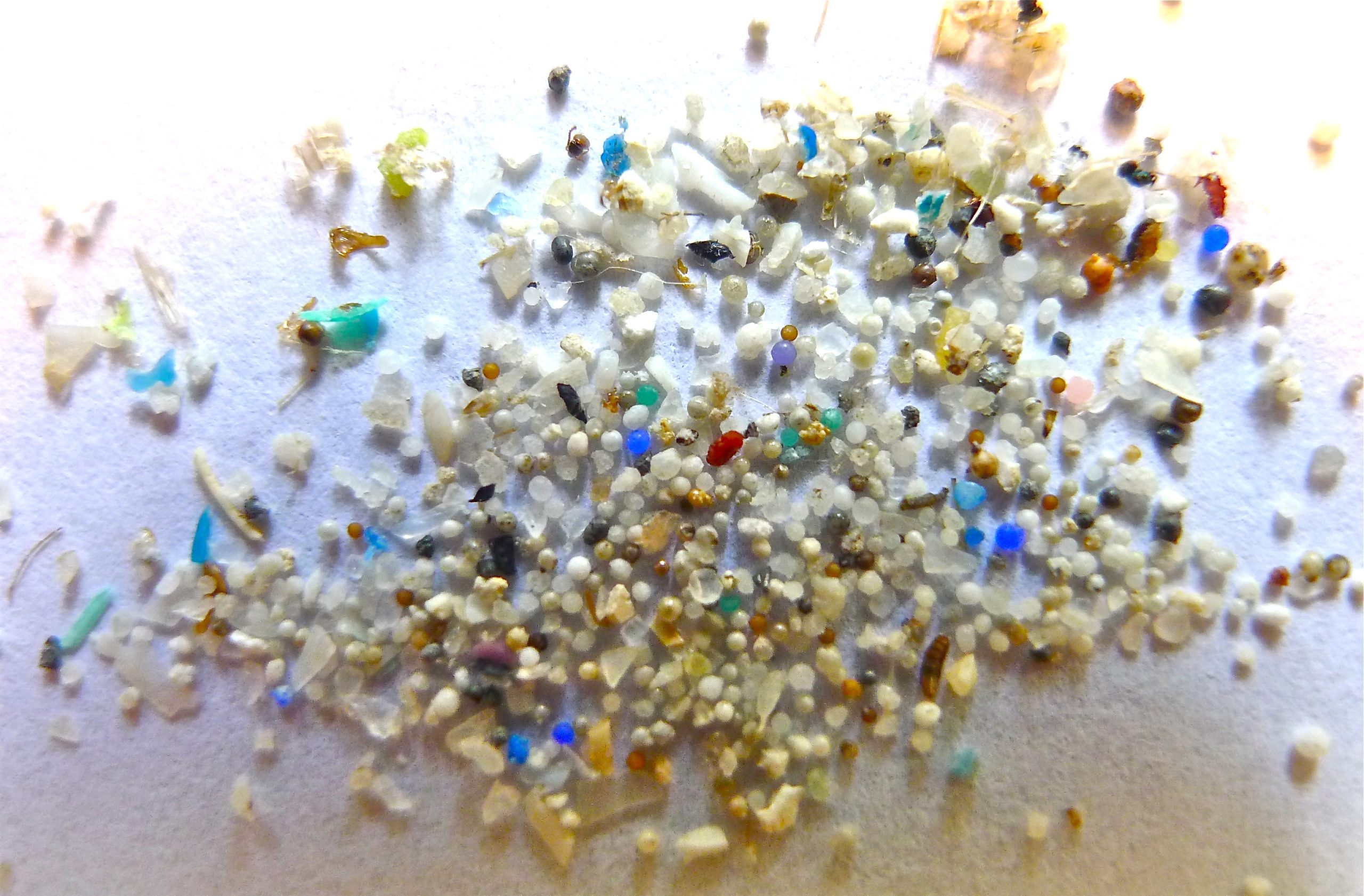FAQs
Can cooking or washing food remove microplastics?
Washing fruits and vegetables can help remove some surface microplastics, but it won’t eliminate those that have been absorbed into the tissues of the food. Cooking does not destroy microplastics.
Can microplastics be filtered out of drinking water at home?
Some high-quality water filters (like those using reverse osmosis) can remove a significant portion of microplastics, but not all home filters are effective. Always check the specifications of your filter.
What are some simple ways I can reduce my microplastic footprint?
You can significantly reduce your microplastic footprint by making conscious choices in your daily life:
- Opt for natural fibers like cotton or wool when choosing clothing instead of synthetics, and make a habit of using reusable bags, bottles, and containers.
- Avoid products containing microbeads, which are often found in exfoliating scrubs.
- Beyond personal choices, supporting policies and brands that are actively working to reduce plastic waste can contribute to a larger positive impact.
Reference
1. Laskar, N., & Kumar, U. (2019). Plastics and microplastics: A threat to environment. Environmental technology & innovation, 14, 100352.
2. Napper, I. E., & Thompson, R. C. (2016). Release of synthetic microplastic plastic fibres from domestic washing machines: Effects of fabric type and washing conditions. Marine pollution bulletin, 112(1-2), 39-45.
3. Tamis, J. E., Koelmans, A. A., Dröge, R., Kaag, et al. (2021). Environmental risks of car tire microplastic particles and other road runoff pollutants. Microplastics and Nanoplastics, 1, 1-17.
4. Kukkola, A., Chetwynd, A. J., Krause, S., & Lynch, I. (2024). Beyond microbeads: Examining the role of cosmetics in microplastic pollution and spotlighting unanswered questions. Journal of hazardous materials, 476, 135053.
5. Reddy, A. S., & Nair, A. T. (2022). The fate of microplastics in wastewater treatment plants: An overview of source and remediation technologies. Environmental Technology & Innovation, 28, 102815.
6. Jamieson, A. J., Brooks, L. S., Reid, W. D., et al. (2019). Microplastics and synthetic particles ingested by deep-sea amphipods in six of the deepest marine ecosystems on Earth. Royal Society open science, 6(2), 180667.
7. Kanhai, L. D. K., Gardfeldt, K., Krumpen, T., et al. (2020). Microplastics in sea ice and seawater beneath ice floes from the Arctic Ocean. Scientific reports, 10(1), 5004.
8. Lim, X. (2021). Microplastics are everywhere—but are they harmful. Nature, 593(7857), 22-25.
9. Egbeocha, C. O., Malek, S., Emenike, C. U., et al. (2018). Feasting on microplastics: ingestion by and effects on marine organisms. Aquatic Biology, 27, 93-106.
10. DiBona, E., Haley, C., Geist, S., et al. (2022). Developmental polyethylene microplastic fiber exposure entails subtle reproductive impacts in juvenile Japanese Medaka (Oryzias latipes). Environmental Toxicology and Chemistry, 41(11), 2848-2858.
11. Smith, M., Love, D. C., Rochman, C. M., et al. (2018). Microplastics in seafood and the implications for human health. Current environmental health reports, 5, 375-386.
12. Surendran, U., Jayakumar, M., Raja, P., Gopinath, G., et al. (2023). Microplastics in terrestrial ecosystem: Sources and migration in soil environment. Chemosphere, 318, 137946.
13. Wang, F., Feng, X., Liu, Y., et al. (2022). Micro (nano) plastics and terrestrial plants: Up-to-date knowledge on uptake, translocation, and phytotoxicity. Resources, Conservation and Recycling, 185, 106503.
14. Balta, I., Lemon, J., Gadaj, A., Cretescu, I., Stef, D., Pet, I., … & Corcionivoschi, N. (2025). The interplay between antimicrobial resistance, heavy metal pollution, and the role of microplastics. Frontiers in Microbiology, 16, 1550587.
15. Sangkham, S., Faikhaw, O., Munkong, N., et al. (2022). A review on microplastics and nanoplastics in the environment: Their occurrence, exposure routes, toxic studies, and potential effects on human health. Marine Pollution Bulletin, 181, 113832.
16. Katchy, A., Pinto, C., Jonsson, P., et al. (2014). Coexposure to phytoestrogens and bisphenol a mimics estrogenic effects in an additive manner. toxicological sciences, 138(1), 21-35.
17. Barceló, D., Picó, Y., & Alfarhan, A. H. (2023). Microplastics: Detection in human samples, cell line studies, and health impacts. Environmental toxicology and pharmacology, 101, 104204.
18. Zhou, Y., Zhang, G., Zhang, D., et al. (2024). Microplastic biofilms promote the horizontal transfer of antibiotic resistance genes in estuarine environments. Marine Environmental Research, 202, 106777.
19. Queiroga, G., Vásquez-Ponce, F., Martins-Gonçalves, T., et al. (2025). Microplastics in marine pollution: Oceanic hitchhikers for the global dissemination of antimicrobial-resistant bacteria. One Health, 20, 101056.
20. Wang, J., Wang, L., Gardner, D. J., et al. (2021). Towards a cellulose-based society: opportunities and challenges. Cellulose, 28, 4511-4543.
21. Kaur, K., Sharma, S., Shree, N., et al. (2023). Recent advancements and mechanism of plastics biodegradation promoted by bacteria: A key for sustainable remediation for plastic wastes. Biosciences Biotechnology Research Asia, 20(1), 1-12.
22. Yang, X. G., Wen, P. P., Yang, Y. F., et al. (2023). Plastic biodegradation by in vitro environmental microorganisms and in vivo gut microorganisms of insects. Frontiers in Microbiology, 13, 1001750.
23. Zhang, E., Stocchino, A., De Leo, A., & Fang, J. K. H. (2022). Performance assessment of bubbles barriers for microplastic remediation. Science of the Total Environment, 844, 157027.
24. Gonzalez-Camejo, J., Morales, A., Peña-Lamas, J., Lafita, C., Enguídanos, S., Seco, A., & Martí, N. (2023). Feasibility of rapid gravity filtration and membrane ultrafiltration for the removal of microplastics and microlitter in sewage and wastewater from plastic industry. Journal of Water Process Engineering, 51, 103452.
25. d’Ambrières, W. (2019). Plastics recycling worldwide: current overview and desirable changes. Field Actions Science Reports. The journal of field actions, (Special Issue 19), 12-21.
26. Prata, J. C., da Costa, J. P., Lopes, I., Andrady, A. L., Duarte, A. C., & Rocha-Santos, T. (2021). A One Health perspective of the impacts of microplastics on animal, human and environmental health. Science of the Total Environment, 777, 146094.
27. Lebreton, L., & Andrady, A. (2019). Future scenarios of global plastic waste generation and disposal. Palgrave Communications, 5(1), 1-11.
